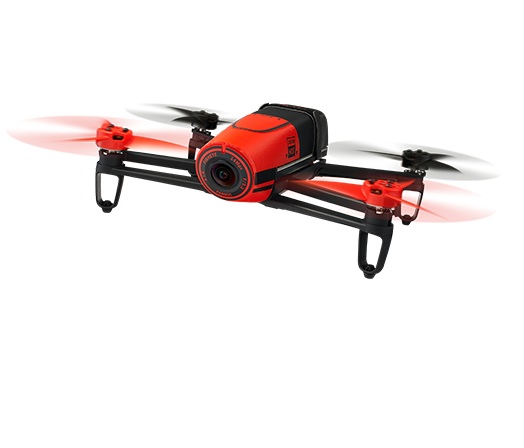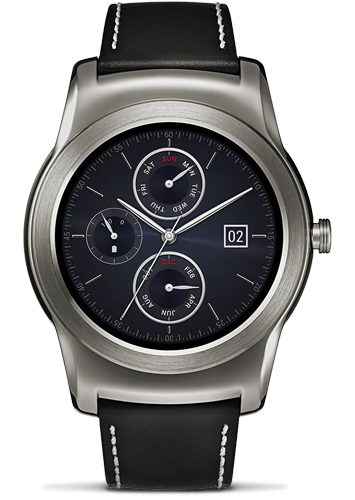 In part one of this series, I described how community-backed embedded boards, home automation, and Internet of Things devices had supplanted mobile projects as the main focal points for open development. In this post, we look at some other areas where Linux and Android are either thriving (media players, TVs, drones, robots), struggling (games), or are well poised for future success (3D printers, augmented reality, wearables, and automotive).
In part one of this series, I described how community-backed embedded boards, home automation, and Internet of Things devices had supplanted mobile projects as the main focal points for open development. In this post, we look at some other areas where Linux and Android are either thriving (media players, TVs, drones, robots), struggling (games), or are well poised for future success (3D printers, augmented reality, wearables, and automotive).
In 2015, Linux and Android continued to cruise along in a wide range of AV-oriented consumer electronics gear including media players, set-tops, and audio systems. They’re also coming on strong in signage and videoconferencing systems and mini-PCs. Some of these included non-laptop implementations of Google’s Chrome OS.
Linux has for years been lurking inside most smart TVs, and the latest models run more advanced distributions like WebOS (LG) and Tizen (Samsung). Linux also continues strong in media streamers, with Roku boxes leading the way, although Android is the typical choice in newer platforms.
After failing with the Android-based Google TV, Google is testing the market once again with an Android TV platform. Most devices won’t ship until 2016, but the highest profile entry — the latest Nvidia Shield— has earned poor marks for its TV experience.
Gaming is proving to be a tough market to crack for both Android and Linux. A number of Steam Machines running Valve’s open source Linux-based OS showed up this fall, but they were late and bore high prices. The critical reception has been fairly brutal, with the lack of compelling new games being the main complaint.
On the Android side, Ouya collapsed and was picked up by Razer, whose intriguing Forge TV has struggled to gain traction. A new Ouya-based Cortex game store, as well as Razer’s promise of a January shipment for its delayed Turret lapboard/mouse combo may revive the product.
Blurring the lines with gaming on one side and industrial applications on the other are a number of new computer vision, virtual reality, and augmented reality head-mount platforms that were unveiled in 2015. Although many of the products won’t ship until 2016, and most are PC peripherals rather than embedded devices, several include Linux- or Android development platforms, such as Razer’s OSVR or Valve’s related OpenVR.
New head-mounted displays aimed at sports included Recon’s Android-based Jet eyewear. Most of the non-sports smart eyewear devices are aimed at industrial field workers. Google is said to be working on a new version of Google Glass that is aiming for an enterprise audience rather than risking more humiliation on the consumer front.
Drones and Robots
2015 was the year that Linux joined the drone conversation. In addition to high-profile launches like 3DR’s Dronecode compatible Solo and Parrot’s BeBop 2, new Linux-based Unmanned Aerial Vehicles have included Ubuntu- and Snappy Ubuntu versions of Erle Robotics’ open source Erle-Copter. Other tuxified, drone-related products include a Flyt autopilot from Navstik Labs.
Market leader DJI announced a Manifold development computer and open SDK for its high-end Matrice 100 drone that runs Ubuntu, and in 2016, Yuneec will release a drone built around Qualcomm’s Ubuntu-based Snapdragon Flight reference platform. Other Linux drones due in 2016 include the indoor-friendly Fleye drone from Belgium, and a Snappy-based drone from French firm UAVIA touted for its ability to be remotely controlled over the web.
This year was another active one for Linux-based terrestrial robots. On the high end, a humanoid, Xenomai-based DRC-Hubo robot from Korea’s Team KAIST won the $2 million DARPA Robotics Challenge Finals. High-end Linux robots demonstrated by robotics research centers included Oregon State’s speedy, bipedal ATRIAS.
In the industrial market, Rethink Robotics launched a one-armed, AI-imbued Sawyer manipulation robot for light manufacturing that runs Linux and ROS. Sawyer is claimed to be smaller, faster, stronger, and more precise than its earlier Baxter. Unbounded Robotics spinoff Fetch Robotics began shipping a Fetch picking robot and Freight hauling bot for the warehouse fulfillment market.
There have also been a number of consumer bots running Linux, such as CoroWare’s 4WD CoroBot Spark open robot platform for STEM education. Like the Dexter Industries GoPiGo, the Spark is based on a Raspberry Pi.
Wearables, car computers, and beyond
In newer categories like wearables and automotive. Linux and Android are faced with considerable competition. There have been only a few non-Android wearables that run Linux, with Samsung’s Tizen-based Gear watches being the main exceptions. Most of the action aside from the popular iWatch and Pebble, has been with Android Wear.

Thanks in large part to the popularity of the iWatch, Android Wear and other more autonomous watches running custom Android builds dropped to 17.4 percent of the smart wearables market in 2015, according to IDC. Yet, by 2019 Android is projected to advance to 38.4 percent share, following Apple WatchOS watches at 47.4 percent.
If smartwatches are all about getting the most out of the least computing resources, automotive computers such as in-vehicle infotainment (IVI) systems have higher power and price points to play with. Here, Linux leads Android, but both are far behind market leader QNX and even Windows Embedded Automotive in terms of shipping systems.
It may be hard to see in an automotive market marked by long development cycles, but Linux is coming on fast with IVI devices based on GENIVI or the Linux Foundation’s Automotive Grade Linux. This year, the AGL project released its first IVI specification, using Tizen for the reference platform, and a Jaguar/Land Rover implementation may not be far behind.
On the Android side, Google’s Android Auto standard, which streamlines interactions between existing IVI systems and Android devices, is likely to be followed in the coming years by a complete Android-based IVI and telematics platform. Meanwhile, Google umbrella company Alphabet plans to spin off Google’s self-driving car project, which has traditionally used Ubuntu, as a separate company. Yahoo! Autos recently reported that Google and Ford have entered into a joint venture to develop an automated ride sharing business using autonomous cars.
Linux has also been used by several other car companies testing autonomous or semi-autonomous technology. It’s too early to say how this market will sort out, not only in terms of the OS, but even the level of autonomy the market will desire. Meanwhile, is it too early to start talking about tuxified flying cars?


